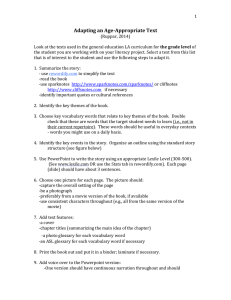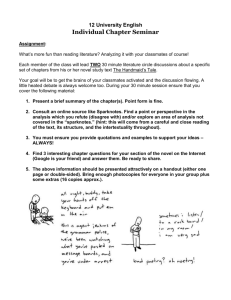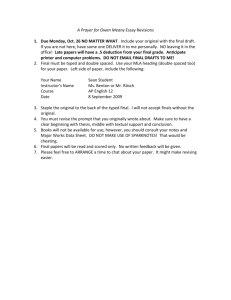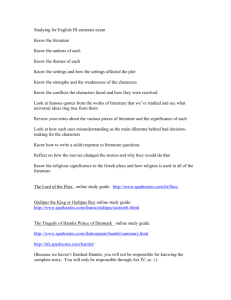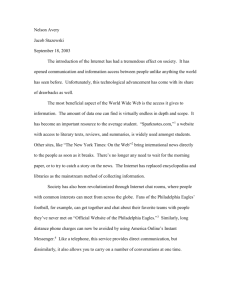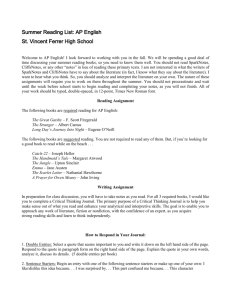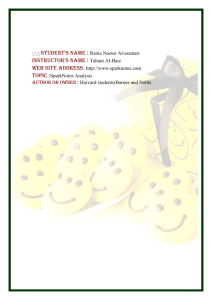Sparknotes/Cliffnotes
advertisement
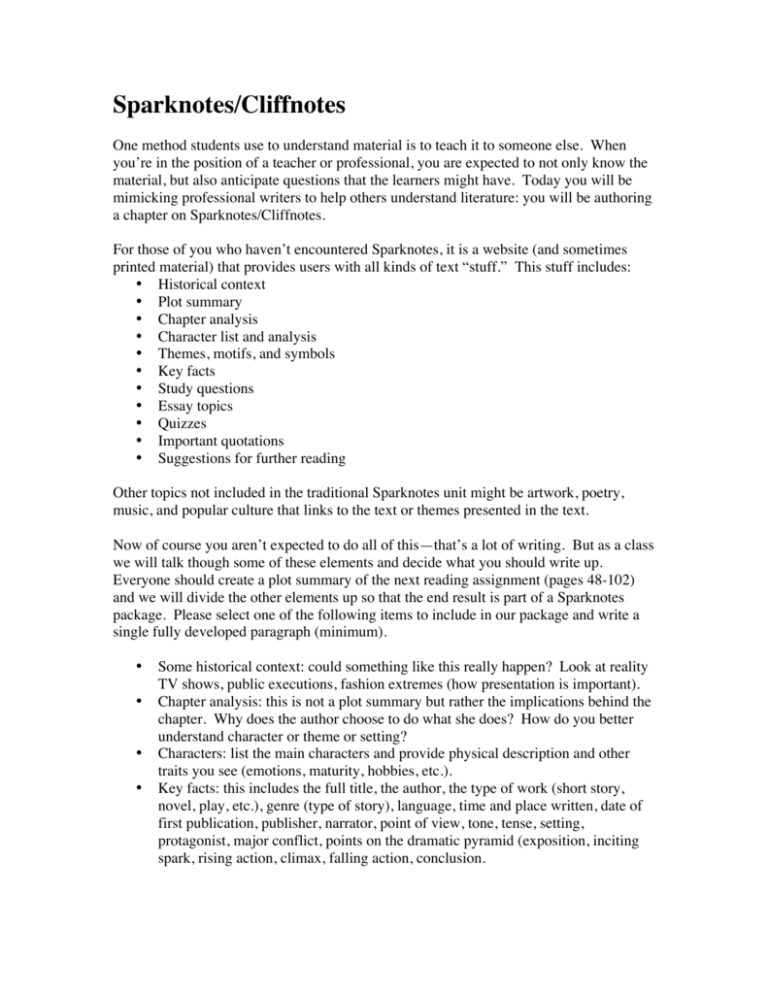
Sparknotes/Cliffnotes One method students use to understand material is to teach it to someone else. When you’re in the position of a teacher or professional, you are expected to not only know the material, but also anticipate questions that the learners might have. Today you will be mimicking professional writers to help others understand literature: you will be authoring a chapter on Sparknotes/Cliffnotes. For those of you who haven’t encountered Sparknotes, it is a website (and sometimes printed material) that provides users with all kinds of text “stuff.” This stuff includes: • Historical context • Plot summary • Chapter analysis • Character list and analysis • Themes, motifs, and symbols • Key facts • Study questions • Essay topics • Quizzes • Important quotations • Suggestions for further reading Other topics not included in the traditional Sparknotes unit might be artwork, poetry, music, and popular culture that links to the text or themes presented in the text. Now of course you aren’t expected to do all of this—that’s a lot of writing. But as a class we will talk though some of these elements and decide what you should write up. Everyone should create a plot summary of the next reading assignment (pages 48-102) and we will divide the other elements up so that the end result is part of a Sparknotes package. Please select one of the following items to include in our package and write a single fully developed paragraph (minimum). • • • • Some historical context: could something like this really happen? Look at reality TV shows, public executions, fashion extremes (how presentation is important). Chapter analysis: this is not a plot summary but rather the implications behind the chapter. Why does the author choose to do what she does? How do you better understand character or theme or setting? Characters: list the main characters and provide physical description and other traits you see (emotions, maturity, hobbies, etc.). Key facts: this includes the full title, the author, the type of work (short story, novel, play, etc.), genre (type of story), language, time and place written, date of first publication, publisher, narrator, point of view, tone, tense, setting, protagonist, major conflict, points on the dramatic pyramid (exposition, inciting spark, rising action, climax, falling action, conclusion. • • • • • Study questions: questions that you should be asking yourself as you read to help you better understand the plot, theme, characters, and the choices made by the author. Suggestions for further reading: if you like this book, what other books have you read that you would recommend to a reader? Important quotations: these are things said by characters and the narrator that you think are important. What are the quotes and why are they important? What do they reveal? Artwork, poetry, music: what artwork, poetry or music have you encountered that relates to this text, the characters, the setting, the themes? Bring in a copy (or the original) and write a brief summary of the connection. Popular culture: are there elements of this text in popular culture? Where? How do they relate? Write a paragraph making those connections. We’ll be saving the following Sparknotes sections for later. Please don’t write on them now: • Essay topics • Quizzes • Themes, motifs, and symbols Naturally, this assignment (like all of them) should be typed, double-spaced, 12 point and in Times. It will be due Monday, September 12. Here’s what’s due: Half a page (typed) of plot summary on pages 48-102 Half a page (typed) of one of the above Sparknotes elements.
